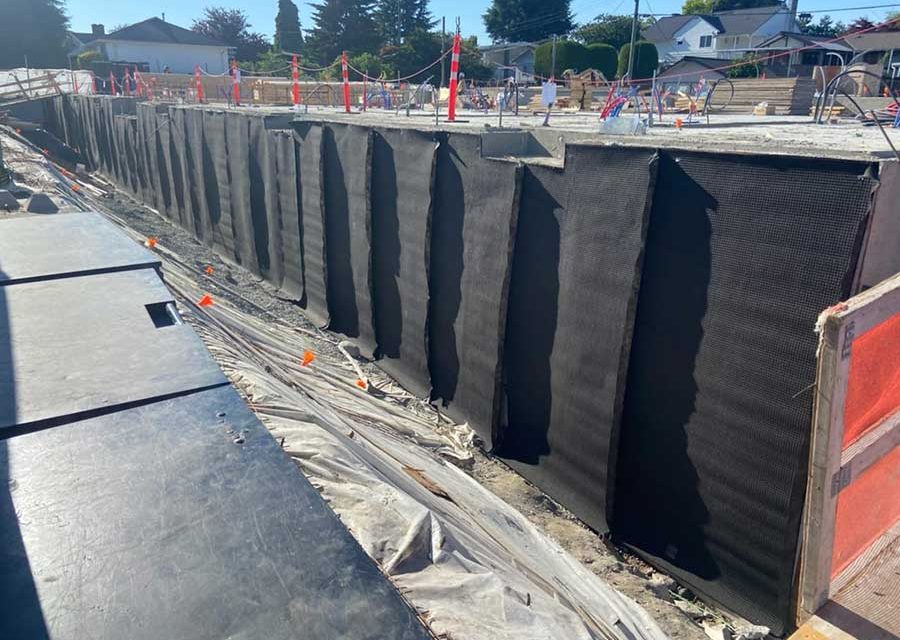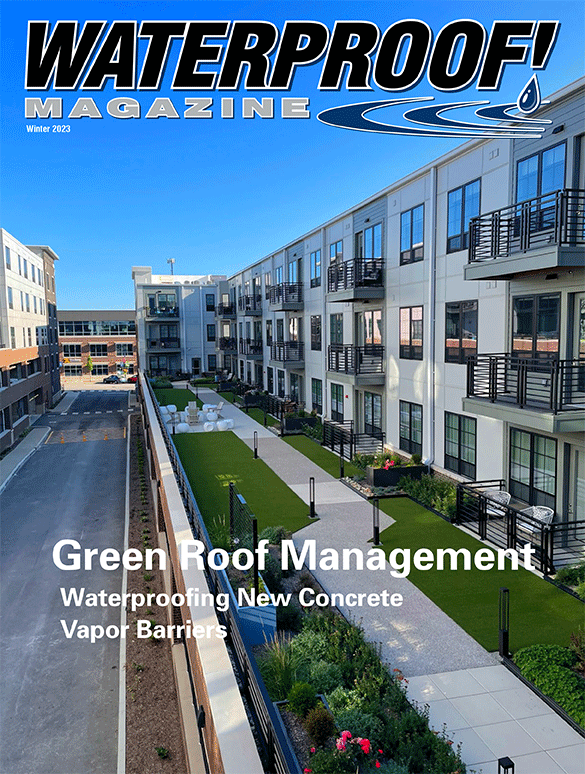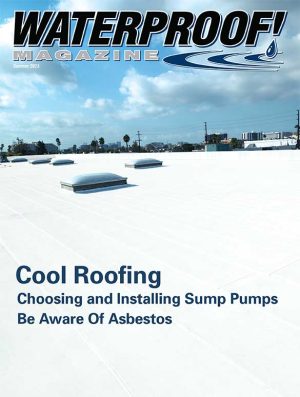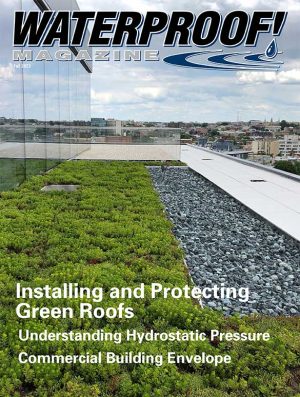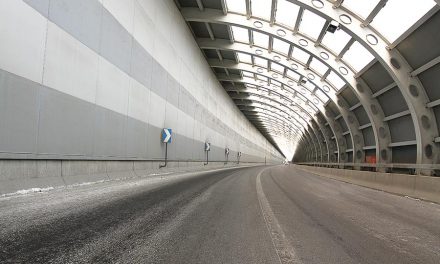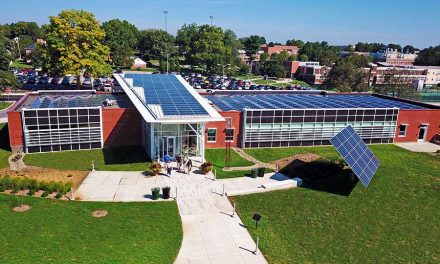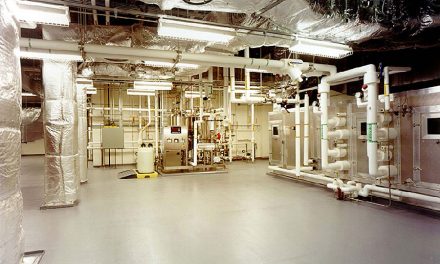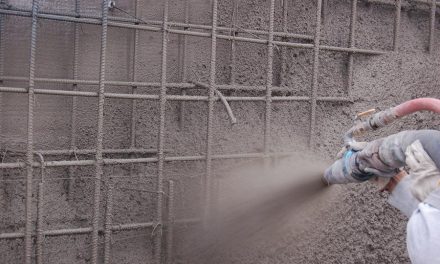By Vanessa Salvia
This is a commercial building that required a drainage board with a high compressive strength due to the immense hydrostatic pressure in the area. The engineer specified DMX Drain 15X.
There are a lot of different ideas out there about how to approach waterproofing new or green concrete. Add in different concrete mixes, slumps, temperatures, and products, and there are a lot of variables.
“The air temperature will be what makes the biggest difference,” says Matt Veazey. “It may take one day, it may take seven days, or it may take 30 days depending on whether it is summertime or wintertime.” Veazey is president of Rubber Polymer Corp. which makes Rub-R-Wall, a liquid spray-applied waterproofing solution. It is a 100% seamless rubber membrane that is effective for use on ICF, block, and poured concrete walls. Even though some of Rubber Polymer’s products are solvent-based, Veazey says it dries very fast.
There’s a big difference between seven days and 30 days, so what is the best rule of thumb to follow? Veazey says most of the time the best thing to do is to follow what the architect or engineer specifies. “With commercial work, many times that ends up being a 30-day wait,” says Veazey. “They are going to want to do a cylinder test first, to make sure the concrete reaches at least 75% of its strength. In residential cases, a lot of the time architects will call for a seven-day wait.”
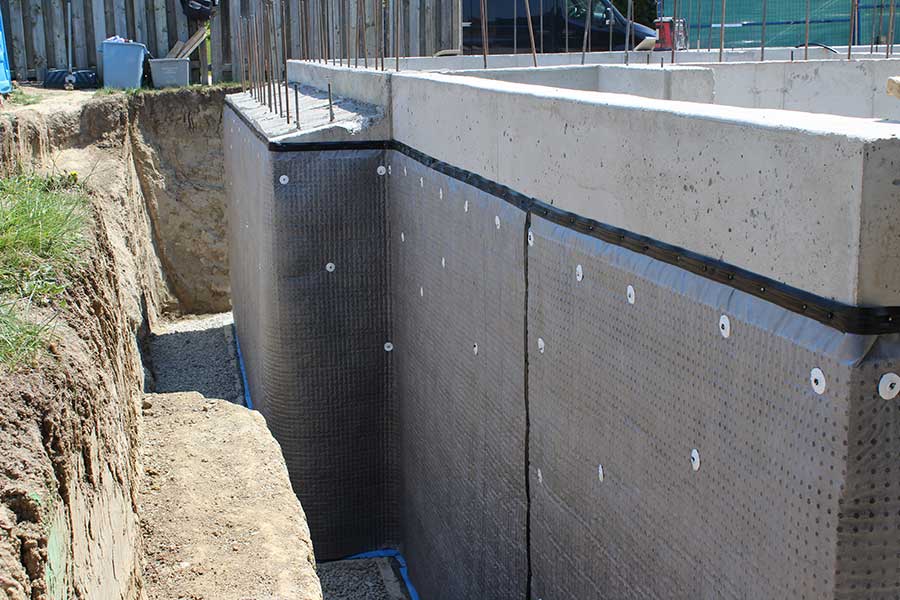
This is a custom home with a large basement. Due to the high water table and heavy backfill, waterproofing was required and DMX Drain 5X was the drainboard of choice. Photo courtesy of DMX Membranes
A cylinder test verifies the compressive strength of the mix that has been achieved. Veazey says aside from following those guidelines, most people who work with concrete often enough learn to recognize the signs that concrete is green or not. “It just boils down to experience,” Veazey says.
The Snap-Tie Test
Many experienced concrete professionals eventually don’t feel the need to perform moisture testing, although some still do. Veazey says a simple way to gauge the readiness of concrete is to test it with
a snap tie. Snap ties are used for vertical concrete wall forming. A snap tie is a metal piece that runs through the form and ties the forms together. After the concrete is poured, the contractor releases the pins from the snap tie. That leaves about a 2-inch piece of the tie sticking out. That is snapped off to bring it flush. “A good rule of thumb is when you break the snap tie, if part of the concrete breaks, it’s too green to waterproof,” says Veazey.
That is generally more true in the winter because it takes longer for the water to evaporate out of the concrete in the winter versus the summer when temperatures are hotter. In wintertime, there is often a greater sense of urgency to finish and backfill a job because the concrete has to be covered or protected somehow in a lot of cases . . . protected from water, rain, or snow, and protection from temperatures that are too cold.
Does Humidity Matter?
It would seem like a humid environment would mean that it would take longer for the concrete to dry. Veazey says regardless of location, water evaporates out of concrete fairly quickly. So quickly in fact, that the humidity in the air doesn’t seem to make much of a difference. Again, for most jobs, concrete pros will rely on their senses and experience, or by following what is specified for the job.
You could think of it as baking a pizza or baking bread. Once you have done it or observed someone else doing it, you know what it is supposed to look like, and then it is easier to tell on your own by using your senses. If an experienced waterproofer shows up to do their waterproofing and the concrete isn’t ready, they will stop and let everyone know that it needs to wait another day or two.
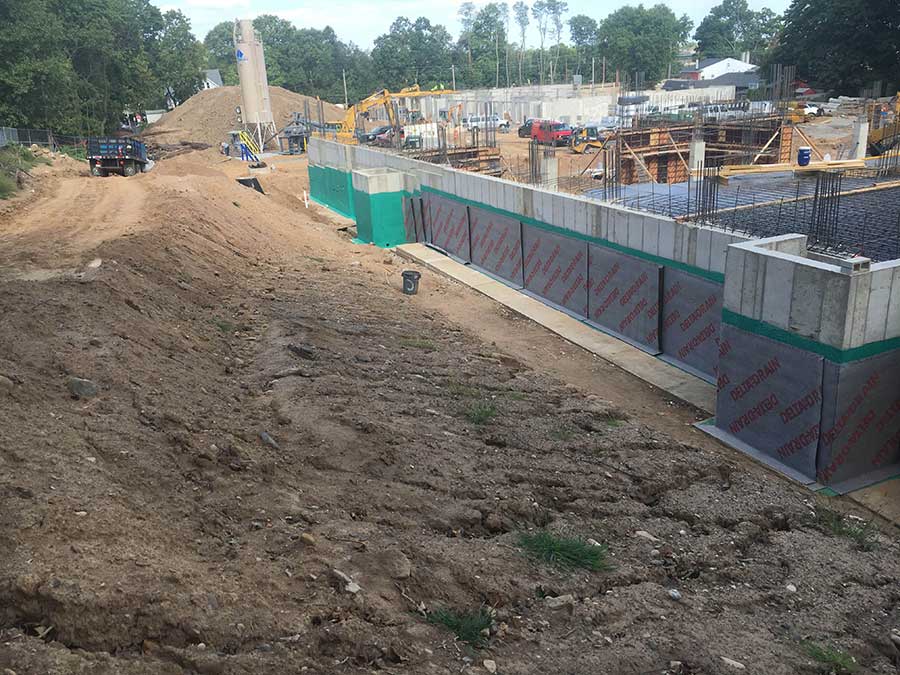
This 105-unit condo in Philadephia, Pennsylvania, used water-based spray-applied Rub-R-Wall to seal foundation walls reaching 23 feet high. It was covered with a dimple board for drainage and backfill protection. Photo courtesy of Rubber Polymer Co.
Peel-and-Stick Versus Spray
Do the same rules apply depending on what type of waterproofing is being applied? With a peel-and-stick, the key to waterproofing is the adhesion between the material and the substrate. Often, there’s a primer that needs to be applied to the concrete before the membrane can be applied. Within that, there are grades of material based on the temperatures of application. The winter-grade material will be a little stickier with more elongations than the summer-grade would be. MFM Building Products, for instance, makes Sub-Seal 40, which is recommended to be applied during a temperature range from 50 degrees to 105 degrees F. In temperatures below 50, use the product in conjunction with MFM’s spray adhesive.
When using a water-based spray-on product, if the concrete is too green, the product simply won’t adhere to the concrete. If the concrete is too wet, the product will drip or run. An oil-based product will stick, but it isn’t recommended to use them in wet conditions or on a wet wall. You won’t get an even coating, which will make the waterproofing faulty.
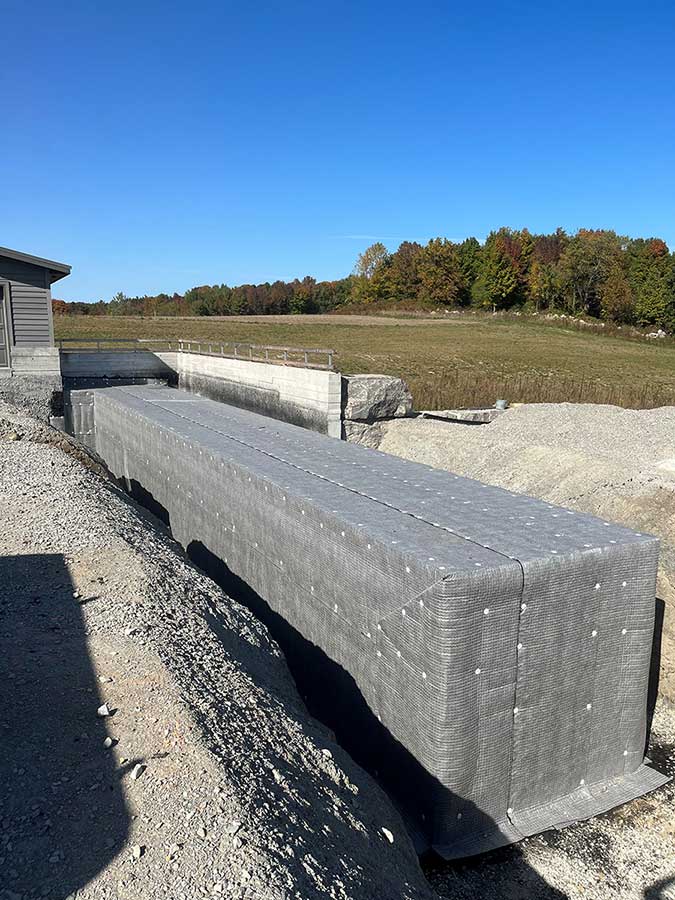
This is a tunnel job that will have a lot of water flow on top and down the sides of the concrete so they chose DMX Drain 5X due to its high compressive strength and superior flow rate.
Using Drainage Boards
Cory Deyell is the North American sales rep for DMX Membranes in Ontario, Canada, which manufactures drainage boards that go on top of the spray-applied system or peel-and-stick waterproofing system. On the topic, Deyell says the most important thing is ensuring that you get proper penetration with your concrete nails when dealing with green concrete. That means using concrete nails that are at least an inch and a quarter up to a size of an inch and five-eighths. “A big problem that you can have when fastening into fresh concrete is the concrete nails not properly sticking to the wall,” he says. “So you’ve got to make sure to use the right length to get the right depth into the concrete wall.”
With porous new concrete, Deyell says it is important to make sure there is no additional water contacting the concrete itself. That’s where the drainage boards prove to be so useful. The boards are made from an HDPE dimple core with a spun-bond geotextile filter fabric heat bonded to the dimples. The flat side of the membrane is mechanically fastened to the wall or foundation, with the dimples facing outward. “The fabric and the dimples will meet the soil upon backfill and the fabric allows the water to pass to the dimple core and reduce the hydrostatic pressure in the ground, diffusing any additional water coming towards the foundation.”
DMX recommends waiting at least a day after the concrete is stripped before installing the dimple board. But, he says, that will vary based on your location and the weather. “For instance, during the winter in colder climates, concrete formers will add calcium to their pours to have a quicker dry time as the cold temperatures don’t allow the wet concrete to dry as fast as they would in the high heat of the summer,” he says. “Depending on the concrete the admixes used and site conditions, most of the time waiting a day to push the nails into the concrete is ok.”
The Bottom Line
There you have it. Most of the time, working with green concrete becomes something that is done by feel. You might not feel like a cake baker or a breadmaker when you’re on a jobsite, but in a sense, you are using some of the same techniques to know when the concrete is “Ready”: it will look right, feel right, and behave right. Other than following the directions that are specified by the architect or manufacturer, wait at least a day before waterproofing. If the concrete is very wet or the environment is a very wet scenario, it may take three or four days at the most.
Winter 2023 Back Issue
$4.95
Waterproofing New Concrete
Vapor Barriers and Underslab Solutions
Managing Weight & Water In a Green Roof
AVAILABLE AS DIGITAL DOWNLOAD ONLY
Description
Description
Waterproofing New Concrete
By Vanessa Salvia
There are a lot of different ideas out there about how to approach waterproofing new or green concrete. Add in different concrete mixes, slumps, temperatures, and products, and there are a lot of variables.
Vapor Barriers and Underslab Solutions
By Vanessa Salvia
Vapor barriers are a moisture control strategy that is crucial for just about any home in any environment. These systems go by various names but they all reduce the rate at which water vapor can move through a material.
Managing Weight & Water In a Green Roof
By Vanessa Salvia
It is clear that a roof can have more value than just being used as a place to spread out air conditioning units. There are a few different types of green roofs. Factors that can vary include the roof’s thickness, weight, and the expected maintenance of the plants.
Additional Info
Additional information
| Magazine Format | Digital Download Magazine, Print Mailed Magazine |
|---|

